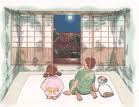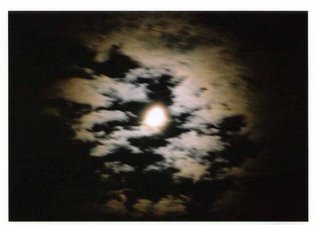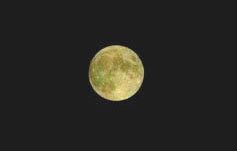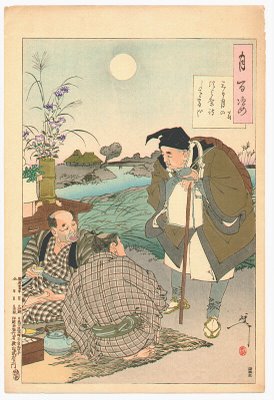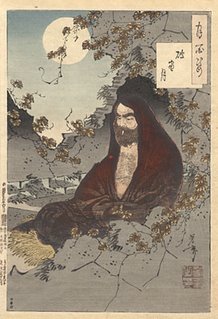:::::::::::::::::::::::::::::::::::::::::::::::::::::::::::::::::::::::::::::::::::::::::::::::::::::
Mulled wine (Gløgg / Glühwein)
Mulled Mead (Honey wine, Honigwein)
***** Location: Scandinavia, Germany and elsewhere
***** Season: Winter
***** Category: Humanity
*****************************
Explanation
Glögg is a Swedish drink for a cold winter evening. It is heated, spiced and sweetened wine, a bit like the German Glühwein. Below is a recipe, though maybe the measurements don't make sense outside Sweden, and some of the ingredients may not be standard stock. But it will be nice even if it's not exactly like the original, so it doesn't really matter!
What to use:
3 sticks cinnamon
2-3 pieces dried Seville orange peel
2-3 pieces dried ginger (not ground)
some 10 cardamom seeds (whole)
some 10 cloves (whole)
1 cup (2.5dl) water
Also: sugar
1 bottle of wine (or similar amount of black currant or grape juice for a non-alcoholic alternative)
Some of these things are hard to find in some places, such as dried whole ginger (and how big is "a piece" anyway?). When in doubt, use fresh rather than powdered dry, as the powder makes it nigh well impossible to sieve/filter it all at -- the whole thing just clogs up. If you can't find dried peels of Seville orange (this has been known to happen), it is possible to substitute a smaller quantity of the thin orange part of the peel of an ordinary orange. In the end you'll probably have substituted just about everything, but that will work too, I've tried it.
Isabelle Prondzynski
What to do:
* Heat spices and water to boiling, then turn off heat and let stand overnight
* Sieve/filter out the spices
* Add the wine (or juice)
* Add sugar to taste (that should be a minimum of one decilitre (=2/5 of a cup); we're talking Swedish cooking here!). You probably have to heat it first so that the sugar dissolves, then see if you want to put some more
* Heat. Note that alcohol evaporates at 72 degrees Celsius (or is it 78?) so you want to be a bit careful!
* Some naughty people would spike the whole thing with a splash of vodka... (optional)
Serve hot with raisins and blanched almonds (dropped into the cups after serving). Glögg is normally served in tiny cups (the cups from your Turkish/Japanese/etc. souvenir tea set will be perfect), and some tiny spoons are useful for fishing out the raisins and almonds.
***
The socio-cultural context for glögg is either as a pre-dinner drink in the winter, or as a separate event, usually at about 4 or 5 pm, a bit like a cocktail party. On the side, pepparkakor is the kind of thing to nibble, but you'll have to look for the recipe for them somewhere else!
The extract keeps very well (that's why they used to sail all the way to Indonesia to get spices -- they work as preservatives), so you can make more and keep it in a bottle, handy for whenever you fancy a glögg on a cold evening (which is probably only about four times in a season; it's rather sweet); it will keep for a year at least.
Skål!
http://www.ling.su.se/staff/evali/glogg.htm
xxxxxxxxxxxxxxxxxxxxxxxxxxxxx
Danish recipe, with English translation
http://www.godset.dk/rolf/glogg.htm
xxxxxxxxxxxxxxxxxxxxxxxxxxxxx
Every family has its own recipe -- including the secret ingredient to raise the alcohol level. It becomes easy to have an extended chat outdoors by minus 15 degrees C -- if one keeps one's temperature (and spirits!) up with the help of glögg... and perhaps follows it up in the sauna!
This would be the case particularly in Finland (web site below, where we also find recipes for the Christmas biscuits and buns which go nicely with glögg...)...
** ** ** Glögg Party at Christmas
1 bottle red wine
2-3 tablespoons Madeira (optional)
1/2 cup raw sugar, or to taste
1/3 cup raisins
1-2 sticks cinnamon
5-6 whole cloves peelings of I orange
1/4 cup blanched, slivered almonds
1/4 cup vodka to spike it up (optional)
In a large kettle, combine all the ingredients except the vodka. Heat slowly, until the drink is steaming hot. Stir every now and then, and taste with a spoon whenever you feel like it. Do not let the drink get even close to boiling. Just keep it warm. Before serving, add vodka if you wish. Servings: 1 to 6.
Read some more Finnish recipies here:
http://virtual.finland.fi/netcomm/news/showarticle.asp?intNWSAID=26071
*****************************
Worldwide use
Germany
Glögg has a definite relationship to the German Glühwein (see below).
Glühwein (Traditional Glow Wine)
Ingredients:
1 litre good red wine
1/8 litre water
60 grams sugar (approx 2oz)
1/4 stick cinnamon
3 cloves
Peelings of half a lemon or two lemon slices
Preparation
Bring the sugar, spices and water to a boil (instead of the water experts say that you really should use red wine for a better flavor) Then let this mixture steep for 30 minutes. Finally, mix in the remainder of the red wine and carefully reheat to just under the boiling point.
If desired, flavor with lemon or orange juice to taste.
Glühwein is sometimes also made from raspberry, blueberry and blackberry wines.
Below are Variations of Glühwein :
1. French Glow Wine : Use Bordeaux with cinnamon, rubbed nutmeg and bay leaves as the spices.
2. Seehund (Sea Dog) : Substitute white wine for the red, and prepare as traditional glow wine. Depending on the acidity of the wine, a little lemon juice can be added to taste.
3. Negus : Prepare with port wine (1/2 wine, 1/2 water) and use rubbed nutmeg and lemon peelings for the spices.
4. Honig Glühwein (Honey Glow wine): prepare with red wine, 150gm honey (5oz), some cinnamon stick and two lemon slices. Heat to just under boiling.
http://www.altfrankfurt.com/Weihnachten/
xxxxxxxxxxxxxxxxxxxxxxxxxxxxxxxxxxxxx
USA
** ** ** Mulled wine
In Frank Capra’s holiday film, It’s A Wonderful Life, a guardian angel walks into a bar and asks for mulled wine “heavy on the cinnamon, easy on the cloves.” For many, hot wine, which would be unthinkable in any other season, is a heavenly drink at this time of year.
It has been a wintry favourite for a long time with almost as names as it has recipes: glögg in Scandinavia, gluhwein in Austria, a bishop in England when made with port, and the Medieval drinks of Clarrey which included honey and spices, Caudell which was thickened with eggs and Ypocras which comes closest to the mulled wine or cider we know today.
However the drink is made, the spices always include the highly aromatic ones common in Britain and Northern Europe hundreds of years ago: cinnamon, nutmeg, ginger, allspice, mace, perhaps cardamom and a citrus peel. Honey or sugar is often added for a sweeter drink but these aren’t always used. What used to be a common drink, however, now seems exoctic. Although fancy packaging has made the ingredients in mulled wine spice sachets seem esoteric and expensive; most of us probably have everthing we need on our spice shelves.
You can experiment with the spices mentioned above but a typical recipe for mulled wine would be a tablespoon of honey or sugar, a stick of cinnamon, and a large pinch each of ginger, nutmeg, mace, cloves and cardamom for each cup of wine or cider or even apple juice. Fortunately the wine does not have to be expensive. Most red depanneur plonk works quite nicely thank you.
It is important not to boil the wine, but simply heat the spices in the wine over a low heat and stir occasionally until the sugar or honey is completely dissolved. For a clearer drink, strain the hot wine through a coffee filter before serving. As you raise a glass, you might consider proffering this heart-warming toast:
Beaujolais, Beaujolais, appellation controllée
Beaujolais est joli, parfumé et chaud
Bonne santé et cheerio.
http://www.montrealfood.com/mldwine.html
xxxxxxxxxxxxxxx
The word "mulled" simply means heated and spiced. Many liquids can be mulled - mead, cider, and of course wine. Mulled wine is a traditional favorite in cooler locations, and goes well with the various celebrations that come around the end of the year.
Mulled wines have a long history. In medieval times these wines were called Ypocras or Hipocris, named after the physician Hippocrates. They were thought to be very healthy, and indeed, with wine at the time being far more sanitary than water, these heated drinks probably did keep people healthy through the cold winters.
Moving forward to the 1500s, cookbooks listed methods of mulling "Clarrey", or Bordeaux. Recipes involved honey, cinnamon, cardamon, galingale and of course French wine. Mulled wine was a favorite in Victorian England, and Negus - a type of mulled wine - was even served to children at their birthday parties. Today, mulled wine is a staple at many holiday parties.
http://www.lisashea.com/wine/types/bl_mulled.htm
*****************************
Things found on the way
German Poem about Christmas Problems because Santa had too much Gluehwein. His sledge went off the road and he could not deliver the presents to the kids in time. He promises never to have too much mulled wine... :o)
Weihnnachtspanne
Lauthals am Fluchen
Der Schlitten liegt im Graben
Rentiere fliehen
Nur einmal nicht aufgepaßt
Und die Weihnacht war versaut
Nie wieder Glühwein
Bevor die Tour zu Ende,
Die Kinder glücklich
Schwört der Weihnachtsmann
In den Trümmern des Schlittens
http://www.haikulinde.de/lyrikforum/board1/77.html
*****************************
HAIKU
a toast
to this millennium
mulled wine
Peggy
http://shiki1.cc.ehime-u.ac.jp/~shiki/kukai/kukai75-2.html
xxxxxxxxxxxxxxxxxxxxxxxxxxxxx
by the fire visiting
with old friends
cups of mulled wine
Maureen Yates
http://www.millikin.edu/haiku/courses/roundtablefall2002/1kukaiHotDrinks.html
xxxxxxxxxxxxxxxxxxxxxxxxxxxxx
Short days, cold dark nights,
Frost sparkles and breathing steams,
Mulled wine by the fire.
© Elfstone 20/8/03
http://www.ukauthors.com/article8681.html
xxxxxxxxxxxxxxxxxxxxxxxxxxxxx
Advent Kerzenschein
Heimlichkeiten Vorfreude
Nüsse und Glühwein
http://wiesengrund.blogger.de/stories/188455/
xxxxxxxxxxxxxxxxxxxxxxxxxxxxxxxxxxxx
sugar plum fairies--
enjoying mulled wine
with Tschaikowsky
Ed Schwellenbach
http://groups.yahoo.com/group/cherrypoetryclub/message/21012
*****************************
Related words
***** Mulled Mead (Mulled honey wine)
Often drunk at small stalls during the Christmas fairs inGermany. Sometimes fruit is included, for example souer cherries. Mead is good for your health too and brings you sweet dreams.
Heisser lieblich Met oder der Met mit Sauerkirsche heiss ....
*****
More about mead:
Mead is a fermented alcoholic beverage made of honey, water, and yeast. It is sometimes known as "honeywine" (for obvious reasons) and is generally pronounced "meed", though South Africans usually pronounce it "med", to rhyme with "red". The word mead refers to the sugary fluid excreted by flowers. In symbology mead is the tipple of the gods.
A mead that also contains spices (like cloves, cinnamon or nutmeg) or herbs (such as oregano or even lavender or chamomile) is called metheglin. The etymon of this word is possibly "medicine" as healing herbs were often stored as metheglin so they would be available over the winter (as well as making them much easier to swallow).
A mead that contains fruit (such as strawberry, blackcurrant or even rose-hips) is called melomel and was also used as a delicious way to "store" summer produce for the winter.
Mulled mead is a popular winter holiday drink, where mead is warmed (traditionally by having a hot poker plunged into it) and flavoured with spices.
Hippocras is spiced grape wine sweetened with honey. A grape-based wine with added honey is called a pyment.
Cyser is made with apple juice and honey; braggot or bracket is made with malted barley and honey.
Mead was very popular in Northern Europe where grapes could not be grown, but it faded in popularity once wine imports became economical. Mead was especially popular with the Slaves and was called in Polish miód (pronounced myoot), meaning honey. Mead was a popular drink among the Polish szlachta. During the Crusades Polish prince Leszek the White explained to the pope that Polish knights couldn't participate in the crusades because there is no mead in Palestine.
In Finland a sweet mead called Sima (cognate with zymurgy), is still an essential seasonal brew connected with the Finnish Vappu festival. It is usually spiced by adding both the flesh and rind of a lemon. During secondary fermentation raisins are added to control the amount of sugars and to act as an indicator of readiness for consumption — they will rise to the top of the bottle when the drink is ready.
Mead is probably also the origin of the word honeymoon as the father of the bride was said to give as a dowry a month's supply of the liquor. Mead is mentioned in many old north Anglo-Saxon stories, including Beowulf.
Mead can have a wide range of flavors, depending on the source of the honey, additives (including fruit and spices), yeast employed during fermentation, and aging procedure. Mead can be difficult to find commercially, though some producers have been successful marketing it.
Many meads retain some measure of the sweetness of the original honey, and some can even be considered as dessert wines. Drier meads are also available, and some producers offer sparkling meads, which (like champagne) can make for a delightful celebratory toast.
http://www.logicjungle.com/wiki/Mead
A common toast when drinking mead is WASSAIL! Wishing you Health !
wassail:
steam from the glasses
around the punch bowl
Haiku from Chibi
xxxxxxxxxxxxxxxxxxxxxxxxxxxxx
Recipe for Wassail Mead
http://www.nhb.org/download/factsht/makingmead.pdf
The History of the Word "Wassail"
Apple tree wassailing is a ceremony which involves drinking to the health of the apple trees.
The Anglo-Saxons used the phrase Wæs hal! as an everyday greeting. Wæs is a form of the verb "to be" related to modern English was. Hal is the ancestor of the modern English words whole and hale. Thus, Wæs hal! literally meant "Be healthy!". The Vikings who later settled in Northern England used a dialectal varient of the same phrase: Ves heill!. Since the Anglo-Saxons and Norse shared a custom of welcoming guests by presenting them with a horn of ale (or cup of mead, or goblet of wine), the greeting evolved into a toast.
The phrase was eventually contracted into one word,wassail, and came to refer to the act of toasting to someones health, wassailing, and to a type of alcoholic beverage (spiced ale or punch) used to toast people's health on special occasions. The use of wassailing to mean "caroling" (as in "Here we go a-wassailing...") stems from the habit of singing songs whilst drinking from the "wassail-bowl" during Christmas and New Year celebrations.
http://www.wyrdwords.vispa.com/heathenry/wassailing/word.html
Thus Wassail itself is also a kigo for winter.
xx xx xx xx
Mead is one of the oldest alcoholic beverages of humankind. It has been made in Ethiopia for many thousand years. There it is called Tej.
In Ethiopia, T'ej is made in private homes for family consumption and is not sold commercially. Each household has its own family recipe and variations in taste result from the type of honey used, temperature, climate, materials and utensils and the time involved in making the mead. Ethiopians purchase gallons of honey at a time to produce the mead and the taste can be as individual as the imagination of the person making it. The same recipe can vary from mother to daughter, for the mead is made from instinct as much as from a recipe.
The extract of a native Ethiopian tree, the Gesho (similar to Hazel) imparts a bitter quality to the T'ej making it the ideal drink to complement the spicy food of the Ethiopians. The honey- sweet, bitter, dry tone of T'ej is enhanced by the food. Ethiopian meals often consist of pureed vegetable greens, lentils, peas, cabbages, bean sprouts, squash and meat - chicken, seafood and lamb. This is all served on a communal plate with injera, a sourdough, uncooked, unleavened bread. Injera is rolled and folded in the manner of a napkin and placed on the rim of the dinner plate or on a side plate.
Read a lot about Ethiopian Tej here:
http://www.gotmead.com/mead-research/tej-in-america.shtml
xxxxxxxxxxxxxxxxxxxxxxxxxxxxxxxxxxxxx
***** Rumpot (Rumtopf) Germany
***** Hot Drinks, a List
xxxxxxxxxxxxxxxxxxxxxxxxxxxxxxxxxxxxx
Bratapfelmet -fruchtiger Honigwein
feinster Druidenfeuer (Kräuterschnaps)
Mjedpiir - Biermischgetränk aus Bier und Honigwein
Drachenglut in Replik-Flasche
und mehr
http://www.trefflich-tropfen.de/
:::::::::::::::::::::::::::::::::::::::::::::::::::::::::::::::::::::::::::::::::::::::::::::::::::::
***** Honey
Non-seasonal Topic
unless specified with the name of a seasonal flower.
heather honey, Ireland
kigo for autumn
Heather, Erika Europa.
xxxxxxxxxxxxxxxxxxxxxxxxxxxxxxxxxxxxx
***** Winter honey from YEMEN
***** Bee (mitsubachi)
***** Honey Spas Russia
Kigo for Autumn
honey spa
our savior savors
honey comb
"chibi" (pen-name for Dennis M. Holmes)
:::::::::::::::::::::::::::::::::::::::::::::::::::::::::::::::::::::::::::::::::::::::::::::::::::::
Back to the Worldkigo Index
http://worldkigodatabase.blogspot.com/
WASHOKU ... Japanese Food SAIJIKI
:::::::::::::::::::::::::::::::::::::::::::::::::::::::::::::::::::::::::::::::::::::::::::::::::::::





